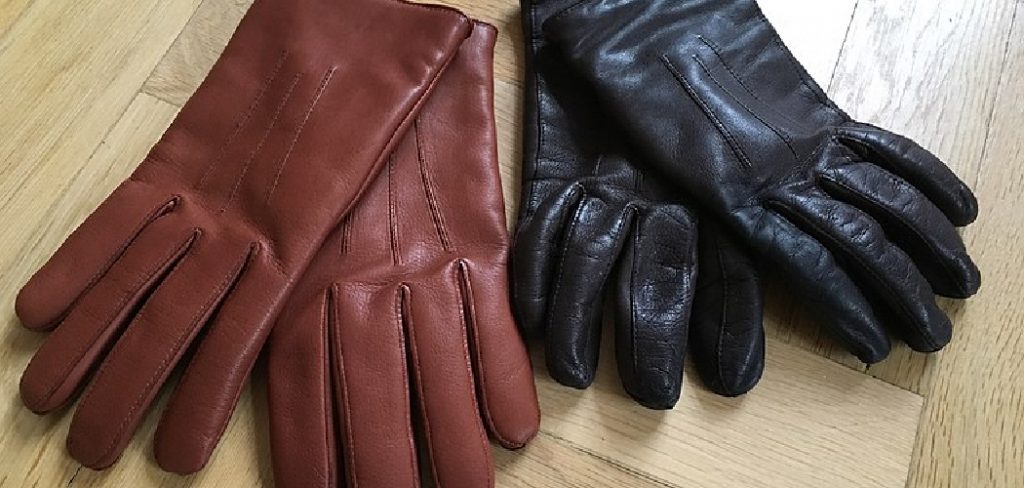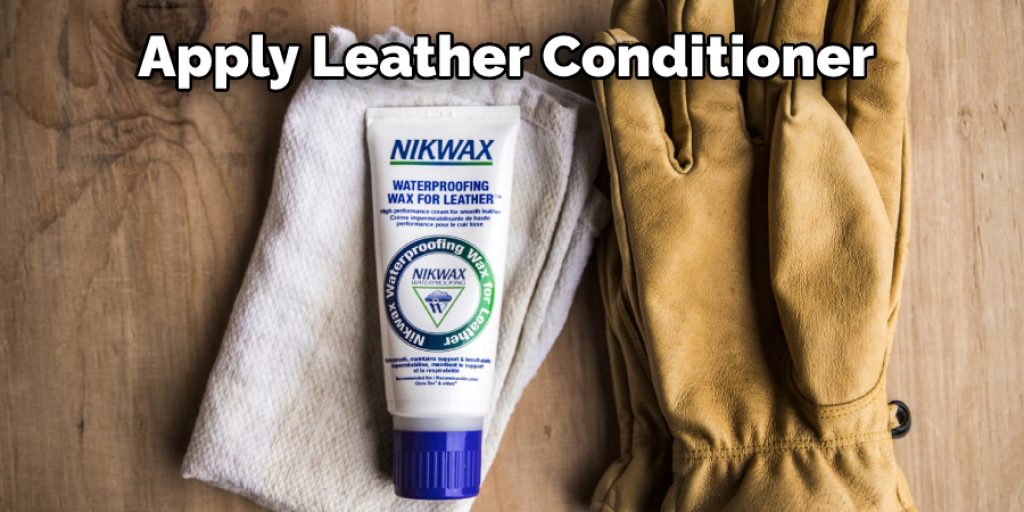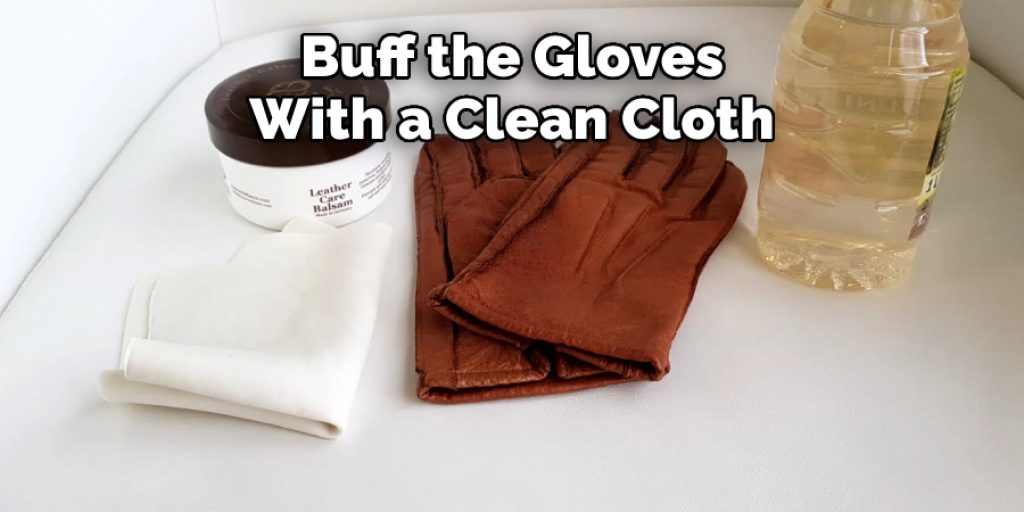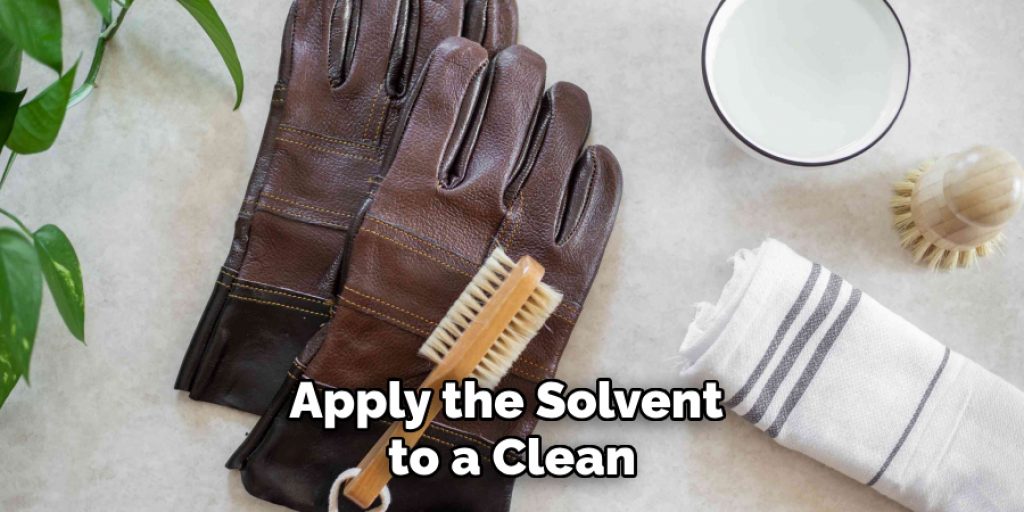How to Soften Leather Work Gloves
Do your hands feel like they’re in a vice when you wear your leather work gloves? It would be nice to have some gloves that were just a little bit softer? In this article, we’re going to show you how to soften leather work gloves. We’ll also share a few of our favorite tips and tricks for taking care of your gloves. So read on, and start working with a little more comfort!

Leather work gloves are made to be tough and durable. But that also means they can be a bit stiff and uncomfortable. If you’ve ever put on a new pair of gloves and found them too tight, you know what we’re talking about. The good news is that you can do a few things to soften up your gloves. Many of these methods are also great for breaking in a new pair of gloves.
A Detailed Guide on How to Soften Leather Work Gloves
Method 1: Use Natural Oils
Natural oils are lipids produced by animals, plants, and certain microbes. These oils have various uses, including food ingredients, cosmetics, pharmaceuticals, and industrial lubricants.
Some common natural oils include olive oil, coconut oil, palm oil, avocado oil, peanut oil, sesame oil, and jojoba oil.
Natural oils can be used to soften leather because they contain fatty acids that can help replenish the natural oils lost from the leather over time. This will help make the leather more supple and less likely to crack or tear.
Step 1: Determine How Much Oil You Need
The amount of oil you’ll need to soften your leather gloves will depend on the size and thickness of the gloves. A good rule of thumb is to use 1-2 tablespoons of oil for a pair of medium-sized or smaller gloves.
If you’re unsure how much oil to use, start with one tablespoon and add more as needed.
Step 2: Apply the Oil
Pour the natural oil onto a clean cloth. Rub the fabric into the leather gloves, using circular motions, until the leather is evenly coated with oil.

Step 3: Let the Oil Sink In
Once the leather is evenly coated with oil, set them aside and let the oil sink in for at least 30 minutes. If you have the time, you can let them sit overnight.
Step 4: Wipe Off Excess Oil
After the natural oil has had time to sink into the leather, wipe off any excess oil with a clean cloth. You don’t want any oil residue on the gloves, as this can attract dirt and debris.
Your leather gloves should now be softer and more pliable.
Benefits of Using Natural Oils:
Replenishes lost natural oils
Makes leather more supple
Helps to prevent cracking and tearing
Drawbacks of Using Natural Oils:
- Can attract dirt and debris
- Requires time to sink in
Method 2: Use a Leather Conditioner
Leather conditioners are products that are specifically designed to soften and condition leather. These products usually contain natural oils, waxes, and silicone polymers that can help to restore the leather’s moisture balance and improve its overall appearance.
There are many different types of leather conditioners available on the market, so it’s essential to choose the right one for your needs. In addition, some leather conditioners are meant for specific types of leather, while others can be used in any leather.

Be sure to read the instructions on the leather conditioner to make sure that you are using it correctly. In addition, conditioning your gloves regularly will help keep them looking their best and prolong their lifespan.
Step 1: Choosing a Leather Conditioner
There are many different types of leather conditioners available on the market. For example, you can find conditioners specifically designed for a certain kind of leather or choose a universal leather conditioner that can be used on any leather.
Conditioners usually come in the form of a cream, gel, spray, or wax. Choose a product based on your personal preferences and the specific needs of your gloves.
If you are unsure about which product to use, ask a salesperson for help or look for reviews online.
Step 2: Cleaning the Gloves
Before you condition the gloves, you will need to clean them. Leather can attract dirt and dust, so removing any surface grime before conditioning is essential.
Use a damp cloth to wipe down the gloves, careful not to soak the leather. You can also use a leather cleaner or saddle soap to clean the gloves if they are filthy.
Step 3: Applying the Conditioner
Once the gloves are clean, you can apply the conditioner. First, apply a small amount of conditioner to a clean cloth and rub it into the leather in a circular motion.
Be sure to work the conditioner into all of the nooks and crannies of the gloves. Pay special attention to areas that seem dry or cracked.
If you use a spray conditioner, hold the bottle about 6 inches (15 cm) away from the gloves and apply a light, even coat.
Step 4: Letting the Conditioner Absorb
After you have applied the conditioner, let it sit on the leather for a few minutes so that it can absorb. Then, please read the instructions on your conditioner to see how long it should be left on the leather.
Step 5: Buffing the Gloves
Buff the gloves with a clean cloth once the conditioner has had time to absorb. This will help evenly distribute the conditioner and give the gloves a nice shine.

Step 6: Storing the Gloves
After conditioning, store the gloves in a cool, dry place. Avoid storing them in direct sunlight or a humid environment, as this can cause the leather to crack.
Conditioning your gloves regularly will help to keep them looking their best and prolong their lifespan.
Benefits of Conditioning Leather
Helps to restore the leather’s moisture balance
Improves the overall appearance of the leather
Makes the leather more pliable and less likely to crack
Prolongs the lifespan of the leather
Drawbacks of Conditioning Leather
- Can make the leather more susceptible to staining
- Can darken light-colored leathers
- It May require more frequent cleaning
Method 3: Using Rubbing Alcohol and Vaseline
Rubbing alcohol is a type of solvent that can soften the leather. It works by breaking down the fibers in the leather, which makes it more pliable. And vaseline is a type of petroleum jelly that can lubricate and protect Leather. It works by creating a barrier between the leather and the elements, which prevents the leather from drying out and cracking.
Step 1: Determine What Type of Leather You Have.
There are two main types of leather, whole grain, and top grain. Full-grain leather is of the highest quality because it has all-natural fibers intact. Top grain leather is lower quality because it has been sanded down to remove some natural fibers.
Step 2: Choose Your Solvent.
There are a variety of solvents that can be used to soften leather, including rubbing alcohol, vinegar, and olive oil. Rubbing alcohol is the most effective, but it can also be the most damaging. Vinegar is less damaging, but it’s not as effective. Finally, olive oil is the least damaging, but it’s also the least effective.
Step 3: Apply the Solvent to a Clean, Dry Cloth.
Dip a clean, dry cloth into the solvent and then rub it onto the leather. Be sure to cover the entire surface of the leather.

Step 4: Let the Solvent Soak in.
Allow the solvent to soak into the leather for at least 30 minutes. The longer it soaks, the more pliable the leather will become.
Step 5: Wipe Off the Excess Solvent.
Use a clean, dry cloth to wipe off any excess solvent. Be sure to remove all of the solvent, or it could damage the leather.
Step 6: Apply Vaseline to the Leather.
Apply a thin layer of vaseline to the leather with a clean, dry cloth. This will help protect the leather from the elements and prevent drying out.
Step 7: Let the Vaseline Soak in.
Allow the vaseline to soak into the leather for at least 30 minutes. The longer it soaks, the more pliable the leather will become.
Step 8: Wipe Off the Excess Vaseline.
Use a clean, dry cloth to wipe off any excess vaseline. Be sure to remove all of the vaseline, or it could damage the leather. Your leather should now be soft and pliable.
Benefits of Using Rubbing Alcohol and Vaseline
- It’s a quick and easy way to soften the leather.
- It’s less damaging than other solvents.
- It’s effective on both full grain and top grain leather.
Drawbacks of Using Rubbing Alcohol and Vaseline
- It can damage the leather if it’s not used correctly.
- It’s not as effective as other solvents.
- It can be messy and difficult to remove the excess from the leather.
You Can Check it Out to Get Wax Off Leather
Conclusion
If you are looking for a more durable and long-lasting work glove, then softened leather gloves may be the answer for you. By following the simple steps outlined in this article on how to soften leather work gloves, you can soften your leather gloves and make them more comfortable to wear. So don’t wait any longer; get started today and enjoy the benefits of softer leather gloves!




